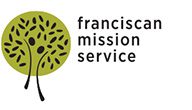San Damiano Cross: Telling the History of Christ’s Passion

The San Damiano cross is the large Romanesque rood cross that hung in the abandoned chapel near Assisi. While still in his early 20’s and seeking his place in the world, Francis of Assisi was praying before this cross when he heard the voice of God commanding him to “rebuild my church.”
It is because of this event in Francis’ life that the cross takes on such importance in the Franciscan tradition. All Franciscans cherish this cross as the symbol of their mission from God to commit their lives and resources to renew and rebuild the Church through the power of Christ.
 |
| San Damiano Cross.Image in the public domain. |
The name of the cross’ artist is unknown, but it was fashioned around 1100. It was painted in a style popular at the time that served to teach the meaning of the event depicted and thereby strengthen the faith of the people.
Let’s examine the images on the cross:
The largest figure is Jesus Christ, represented both as wounded and strong, standing upright and resolute. The bright white of the Lord’s body contrasts with the dark red and black around it and, therefore, accentuates the prominence of Jesus. He projects the life of divine nature in a body pierced by nails in the hands and feet, by the crown of thorns on his head, and by the soldier’s lance in his side. This representation contrasts with the regal Christ portrayed on the cross in earlier centuries and the crucified Christ depicted generally throughout the Church since the beginning of the 14th century.
The next largest figures are the five witnesses of the crucifixion and witnesses of Jesus as Lord. On the left side are the Virgin Mary and St. John the Evangelist, to whom Jesus entrusted his mother. On the right side are Mary Magdalene; Mary, Mother of James; and the centurion who in Matthew’s Gospel account asks Christ to heal his son. Both Mary and Mary Magdalene have their hands placed on their cheeks to reflect extreme grief and anguish. The first four witnesses have halos because they are saints who gave their lives for the Lord.
The three smaller figures are represented as witnessing the crucifixion. On the lower left is Longinus, the traditional name of the Roman soldier who pierced the side of Jesus with a lance. In the lower right is Stephaton, the traditional name for the soldier who offered Jesus the sponge soaked in vinegar wine.
Peering over the left shoulder of the centurion is a small face. A close look reveals the tops of the heads of three others beside him. This represents the centurion’s son who was healed by Jesus and the rest of his family to show that “he and his whole household believed.” (John 4:45-54)
At both ends of the crossbar are six angels are represented as marveling over the event of the crucifixion. Their hand gestures indicate they are discussing this wondrous event of the death and calling us to marvel with them.
At the foot of the cross there is a damaged picture of six figures, two of whom have halos. In accordance with the traditions of the day, these six are the patrons of Umbria, the region surrounding Assisi: St. John, St. Michael, St. Rufino, St. John the Baptist, St. Peter, and St. Paul.
On the top of the cross, one sees Jesus now fully clothed in his regal garments and carrying the cross as a triumphant scepter. He is climbing out of the tomb and into the heavenly courts. Ten angels are crowded around, five of whom have their hands extended in a welcoming gesture to Jesus, who himself has his hand raised in the form of a greeting.
At the very top of the cross is the Hand of God with two fingers extended. This is to be understood as the blessing of God the Father on the sacrifice of his Son. On the right side of the picture next to the left calf of Jesus, there is a small figure of a fowl. Some art historians have interpreted it to be a rooster, (Jesus’ denial by Peter); other commentators see it as a peacock, a frequent symbol of immortality in Early Christian art. Along the lower right side of the shaft, there is a small animal, possibly a cat.
Fr. George Corrigan, OFM, is the pastor of Sacred Heart Parish in Tampa, Fla. From 1996 to 1999, he served with FMS as a lay missioner in Nairobi, Kenya, working with refugees and youth. After joining the friars and the priesthood, Fr. George became the president of FMS’ board of directors in 2011.
Tagged in:

